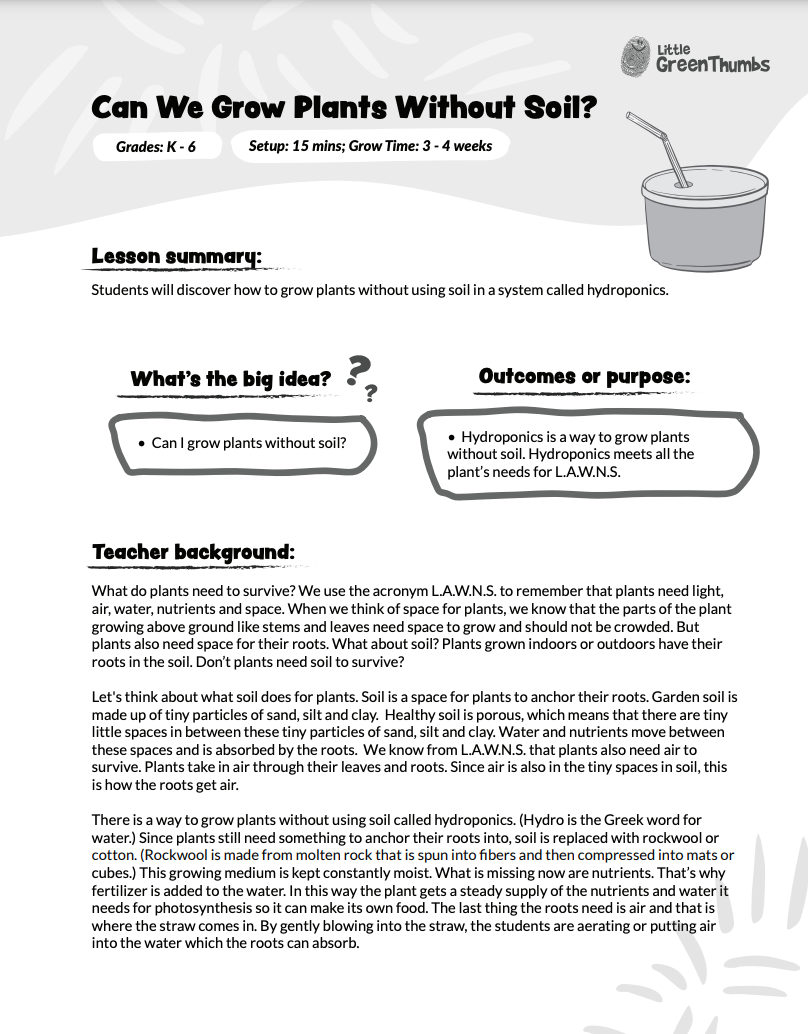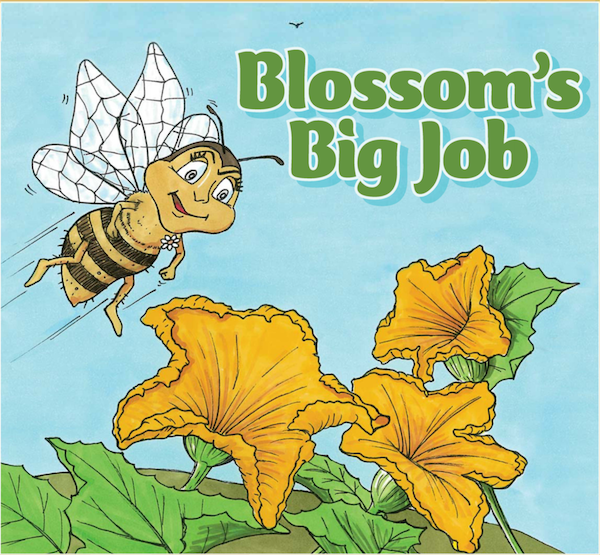Experiment: Can We Grow Plants Without Soil?
Grades: K – 6
Students will discover how to grow plants without using soil in a system called hydroponics.
Set up: 1 hour
Observation: 1 hour the next day
What do plants need to survive? We use the acronym L.A.W.N.S. to remember that plants need light, air, water, nutrients and space. When we think of space for plants, we know that the parts of the plant growing above ground like stems and leaves need space to grow and should not be crowded. But plants also need space for their roots. What about soil? Plants grown indoors or outdoors have their roots in the soil. Don’t plants need soil to survive?
Let’s think about what soil does for plants. Soil is a space for plants to anchor their roots. Garden soil is made up of tiny particles of sand, silt and clay. Healthy soil is porous, which means that there are tiny little spaces in between these tiny particles of sand, silt and clay. Water and nutrients move between these spaces and is absorbed by the roots. We know from L.A.W.N.S. that plants also need air to survive. Plants take in air through their leaves and roots. Since air is also in the tiny spaces in soil, this is how the roots get air.
There is a way to grow plants without using soil called hydroponics. (Hydro is the Greek word for water.) Since plants still need something to anchor their roots into, soil is replaced with rockwool or cotton. (Rockwool is made from molten rock that is spun into fibers and then compressed into mats or cubes.) This growing medium is kept constantly moist. What is missing now are nutrients. That’s why fertilizer is added to the water. In this way the plant gets a steady supply of the nutrients and water it needs for photosynthesis so it can make its own food. The last thing the roots need is air and that is where the straw comes in. By gently blowing into the straw, the students are aerating or putting air into the water which the roots can absorb.
Materials:
- Cotton balls or rockwool
- Seeds: Leaf lettuces like red sails, oak leaf or Grand Rapids work well. You can also try basil, water cress, pak choi, arugula and spinach
- Waterproof tray or shallow container
- One 500 ml plastic container with lid (per student, such as a repurposed margarine, cottage cheese or yogurt container1 clear glass or plastic cup
- Plastic dome or clear plastic wrap
- Plastic drinking straw
- Utility Knife (for teacher use only)
- Spray bottle with water
- Water-soluable 20-20-20 fertilizer1 whole stalk of celery


